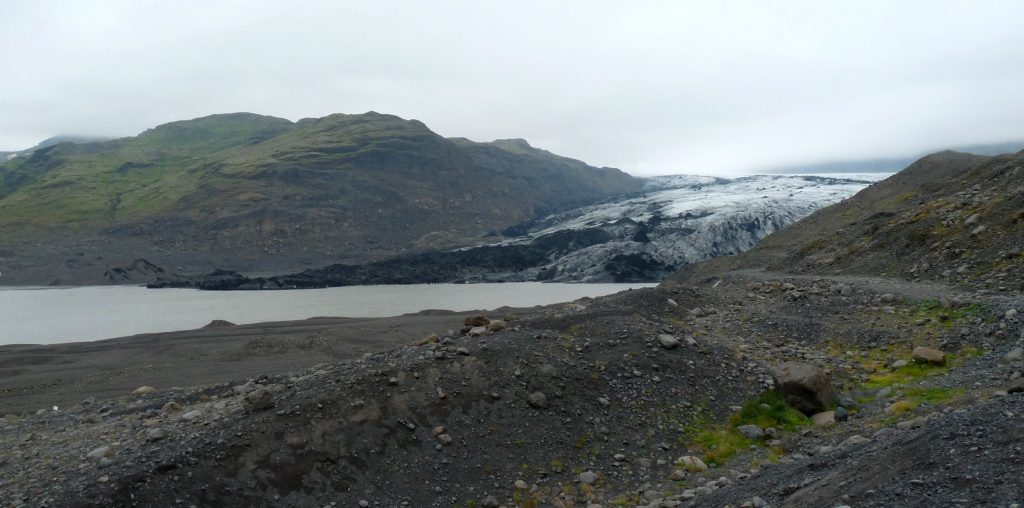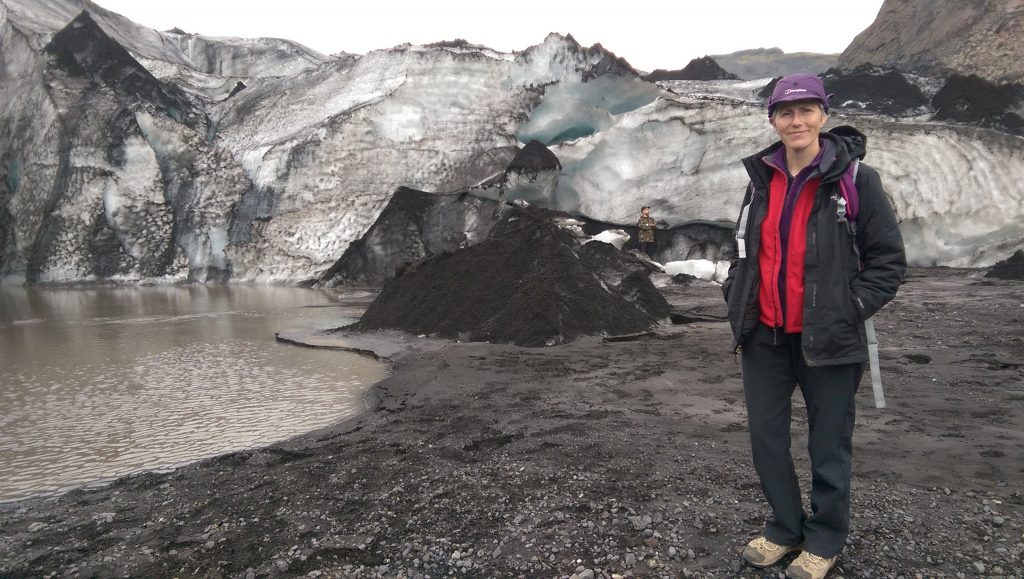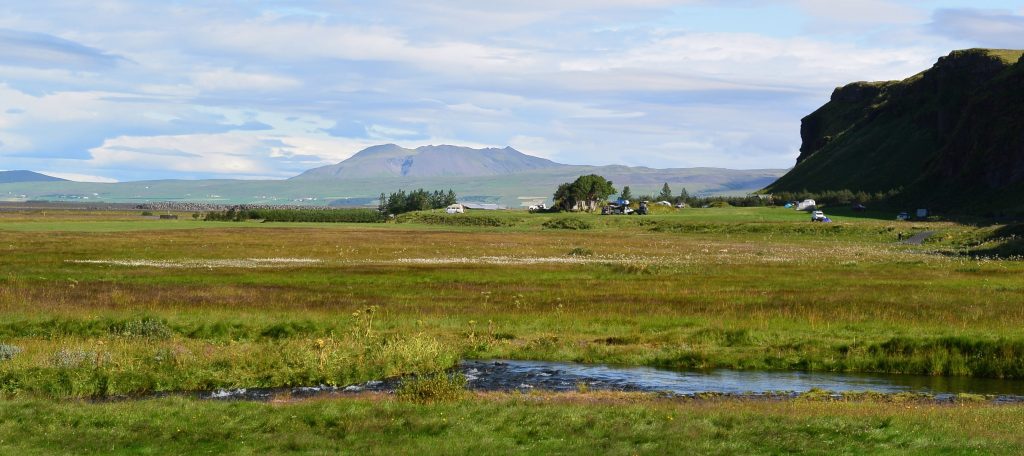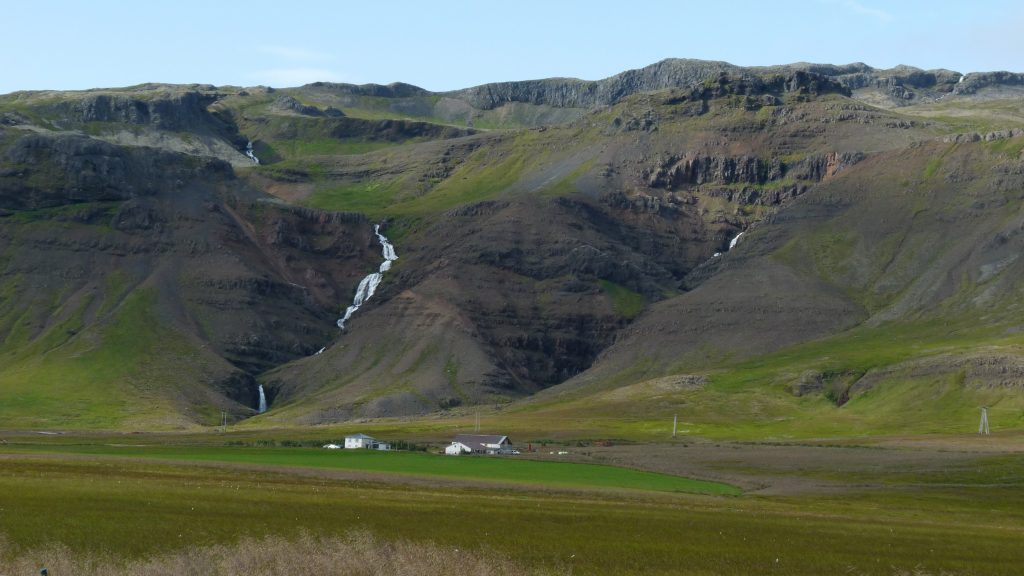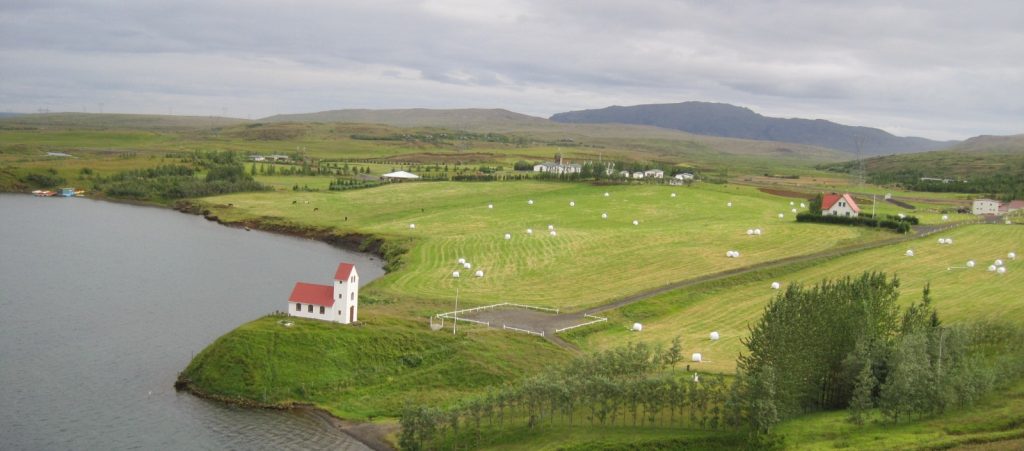Gordon Walker – Visiting Professor of Geography
As we have travelled through the fantastic and diverse landscapes of Iceland, infrastructural networks have been continually present. They have enabled and supported our visit in many different ways. The transport infrastructure of roads, petrol stations, signs, cattle grids, bridges and other connected technologies have enabled our movement and our rapid transition from one landscape experience and evaluation to another. The electricity network of powerlines, pylons and substations has powered the places we have stayed in, the shops and restaurants we have consumed in, the cameras and phones we have charged overnight. The extraordinary geothermal heat networks that supply heat and hot water to over 90% of Icelandic homes, have warmed us and provided sulphurous showering experiences. The mobile communication network has kept us in touch with international events – many we would maybe rather not really know about – and enabled the ongoing blogging and tweeting that this writing is part of. Without infrastructure, our research visit would not be, could not be, what it has been.
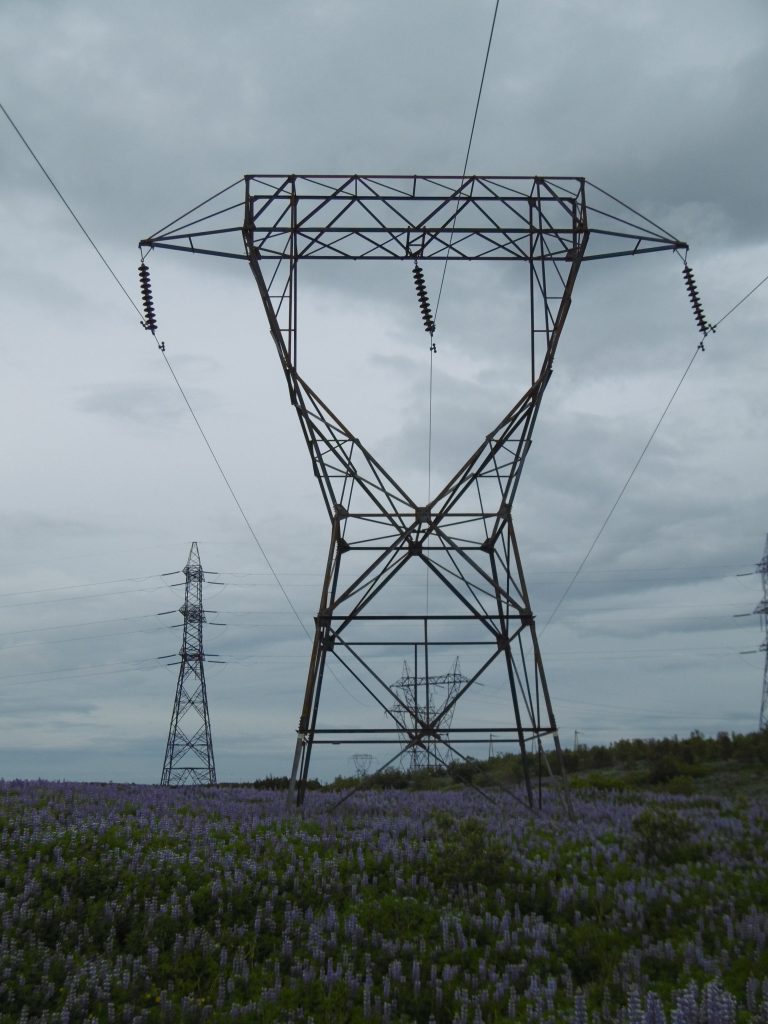
Pylons in the lupins – Southern Iceland, G. Walker, 2016
Some of this infrastructure, and its working, is invisible – pipes and cables hidden underground, text messages flying through the air – but much is in the landscape and part of it. Pylons and powerlines accompanied our traversing of the open, flat sandar of the southern coast and traced their way up into remote valleys and open countryside to connect even the most isolated homes to the electricity grid. Communication masts, we noted several times, were now the dominant features of settlements when viewed from a distance, usurping the traditional vertical supremacy of church steeples. The pipelines of geothermal systems formed striking linear and zig-zagging shapes across open hillsides that otherwise took more natural, vegetated or rugged forms.
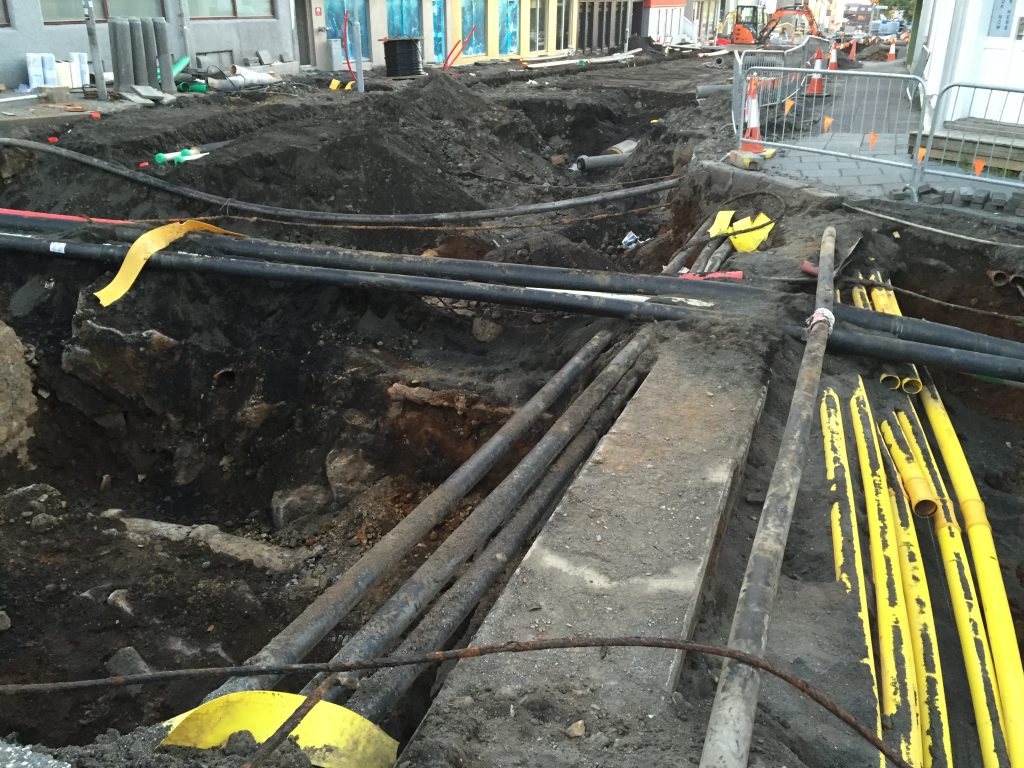
Normally hidden underground pipes in Reykjavík, G. Walker,2016
How we evaluate the status of such infrastructure within landscapes is clearly a matter of judgement and far from straightforward. Whether it jars, confronts us as out of place, detracts from the ‘natural’ and the ‘wild’, or the ‘traditional’ and the ‘vernacular’, and, crucially, whether its purpose and value justifies its presence, are all wrapped in what we see (and don’t see) and what we tolerate or object to. In particular experience shows that the patterns of opposition to new infrastructure can often centre on the how its value is distributed across society – how widely and collectively its benefits and positive outcomes are felt and realised.
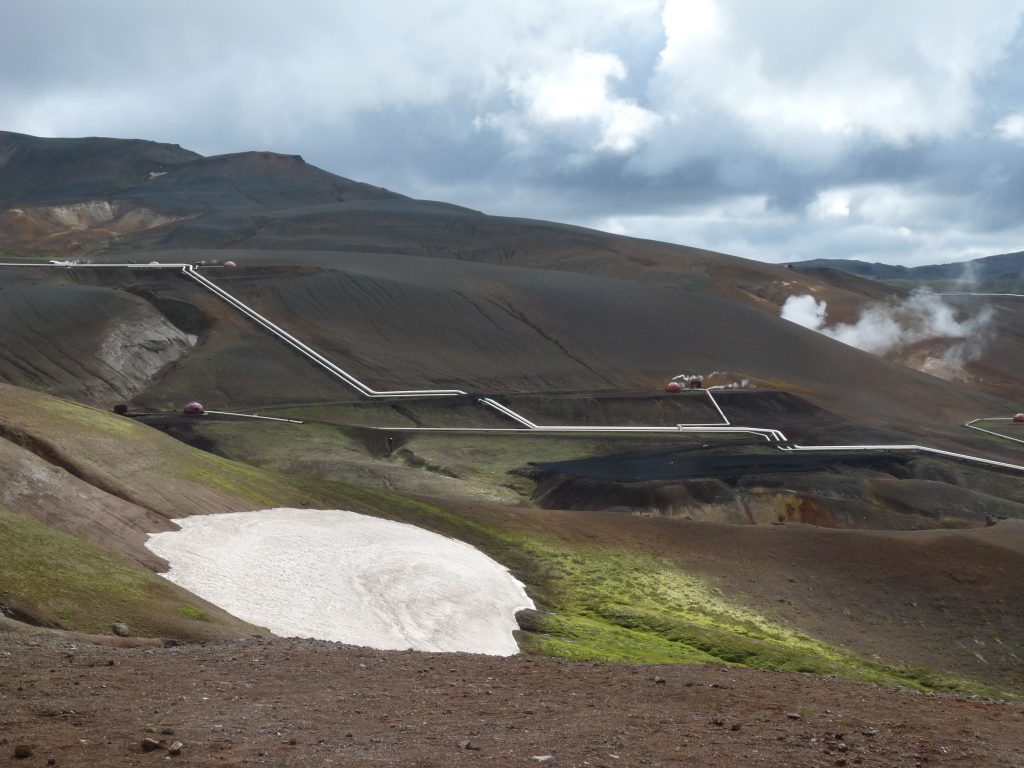
Geothermal system pipelines, Iceland, F. Tweed, 2015.
In Iceland this has been a crucial part of controversy about new hydroelectric dams in the highlands, and related electricity distribution network upgrading. In a country where electricity is already low carbon and cheap, and where heat supply is almost entirely geothermal, why should new energy infrastructure, particularly in areas of high landscape value be needed? The answer is not for the collective everyday needs of ordinary Icelanders, but for attracting further investment into the big conglomerate-owned aluminium industry, which already consumes nearly 80% of all electricity in Iceland; as well as for flowing energy into the grand dreams of international interconnectors that would enable Iceland to become a low carbon energy source for Europe. Compare the widely dispersed collective benefits of communication masts or geothermal heating, with the particular national and international interests behind these big energy infrastructure investments and something at least of the complexity of making sense of existing and new infrastructures within Icelandic landscapes becomes apparent.


